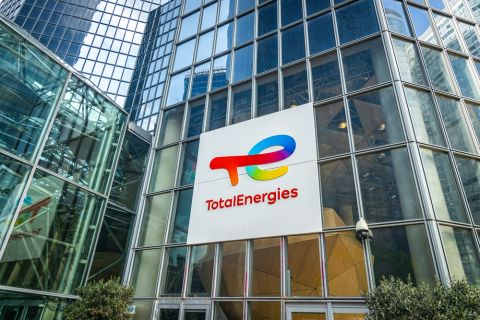Despite evidence that extensive natural gas shale formations exist around the world, energy companies are continuing to develop US-based LNG export terminals. On Sept. 11, 2013, the US Department of Energy (DOE) conditionally approved Dominion Resources’ Cove Point terminal for the export of LNG to countries that are not party to free trade agreements with the US. The Cove Point facility is the fourth LNG export project to earn DOE approval, joining BG Group and Energy Transfer Partners’ Lake Charles facility, Cheniere Energy’s Sabine Pass facility, and Freeport LNG’s facility. These four projects, as well as 20 other not-yet-approved applicants, are hoping to profit from the US shale gas boom by exporting gas to sell at the considerably higher natural gas prices found in Europe and Asia.
The opportunity for US-based companies to benefit from high foreign natural gas prices likely has a time horizon. Many countries estimated to have ample unconventional gas resources are actively seeking to develop their natural gas shale formations. The US Energy Information Administration currently estimates worldwide aggregate shale gas resources at approximately 205 Tcm (7,299 Tcf), with the top five contributing countries being China, Argentina, Algeria, the US, and Canada.
Global development
Nevertheless, production from unconventional resources outside of the US faces a number of obstacles that are likely to delay or prevent, at least in the near to medium term, non-US producers from being able to approach the levels of production currently enjoyed in the US. A significant differentiating factor in the ability, economic efficiency, and speed of development of natural resources is the varied legal systems governing ownership of mineral rights. The US system allows for private ownership of oil and gas resources. As a result, entrepreneurial companies have been able to acquire mineral rights from individual landowners on a small scale early in the life cycle of shale gas development, allowing for the rapid exploration of various plays and the development of innovative production techniques to deal with the varied geologies found across the country. This in turn has spurred the type of significant investment by major producers that allowed for the quick ramp-up of production and development of the infrastructure needed to fully develop the resource.
In contrast, in a nationalized mineral rights system, rights to exploit oil and gas are typically auctioned to big oil companies in large blocks, effectively excluding smaller entrepreneurs from investment and potentially impeding the risk-taking, technological innovation, and rapid organic exploration and development that helped spur shale gas production in the US.
Fiscal and other governmental policies also can play a role in slowing development of shale gas reserves. Like several US states, many European countries have focused their regulatory and environmental regimes on the practice of hydraulic fracturing. Some have gone as far as suspending the practice until detailed (and politically sensitive) environmental assessments are complete. Others, such as France, which has some of the largest estimated shale gas reserves in Europe, have banned hydraulic fracturing altogether. Additionally, many countries set domestic gas prices, require a certain amount of gas produced to be sold domestically, and/or require use of governmental partners when selling or negotiating natural gas contracts. Robert Beck of Anadarko Petroleum Corp.’s International Gas Commercialization team told Forbes, “Most of the fiscal terms that the other countries have in place are totally incompatible with unconventional development.” He added, “Outside of North America and the US in particular, the hydrocarbon pricing is all governed by petroleum contracts, and the governments will tell you what costs are allowed for you to recover.”
Commerciality
In addition to legal and political obstacles, the size of the resource and its recoverability on a commercially reasonable basis are at issue. The US Energy Information Administration’s (EIA’s) estimates of shale gas reserves in certain countries, including China, France, Libya, Mexico, South Africa, and Norway, have been revised downward. Moreover, the EIA’s estimates do not consider whether the gas would be commercially recoverable at current prices or whether production from those plays is commercially more attractive on a marginal basis than investments in production from well-developed resource areas such as those in the US. Consequently, the EIA’s estimates do not automatically translate to a shale gas boom.
As an example, in Poland – initially considered one of the most promising European countries for shale gas production – ExxonMobil and BNK Petroleum have both reported disappointing results from exploratory wells. In addition, ExxonMobil has reportedly stopped additional exploration after finding no sustained commercial hydrocarbon flow rates.
Extracting and moving the shale gas to market presents logistical obstacles as well. Hydraulic fracturing requires an enormous water supply and disposal/treatment resources (Chesapeake Energy reports that its typical horizontal deep shale gas well requires an average of 19 MMl [95 MMgal]). Many shale gas formations may lack the inexpensive access to water that is necessary to make extraction commercially feasible or the resources to dispose of or treat wastewater in an environmentally appropriate or economic fashion. Lack of proximity to the critical gathering, processing, and transportation infrastructure needed to link production areas to market areas also has slowed the drive to develop new production sources in many areas.
Finally, tremendous technological resources and experience are necessary to develop unconventional resources. Non-US producers have attempted to bridge this gap by partnering with companies that are successfully producing in the US. But the geology of shale plays can differ significantly from one region to another (and, of course, vary widely within North America). In Europe, for example, the plays tend to be smaller, deeper, and less permeable, making at least a portion of existing experience not directly adaptable to new production areas.
Considering these and other obstacles, some industry experts predict that it could be at least 10 to 15 years before other countries will begin to produce significant quantities of shale gas. Matt Schatzmann, executive vice president for global energy marketing and shipping at BG Group, told the Financial Times, “We don’t see a big wave of shale development globally in the near term…. You’ve seen a tremendous change in the US, and the US was really, in terms of developing unconventional, a sweet spot. Our view is that we’re skeptical that’s going to be fully replicated anywhere else as quickly as we’ve seen it in the US.”
With cost commitments north of US $10 billion and multiple years required to design, permit, and construct an LNG export terminal, as well as significant investments in incremental US oil and gas production and infrastructure and the growth in investments in US-based industries that rely on natural gas energy prices overall, it is clear that the industry both inside and outside the US is betting on a significant and lasting advantage for US shale gas production.
Recommended Reading
EnQuest Selling Stake in North Sea Golden Eagle Oilfield, Sources Say
2024-04-16 - EnQuest has struggled in recent years with high debt levels and a drop in profits after Britain imposed a 35% windfall tax on North Sea producers.
Hess: Pre-emption Provision Doesn't Apply to Buyout Deal With Chevron
2024-02-27 - Hess Corp. said on Feb. 27 that a pre-emption provision does not apply to its proposed $53-billion buyout by Chevron Corp. and it remains "fully committed" to the deal.
TotalEnergies Buys Majority Stake in Ecoslops Provence JV
2024-03-01 - TotalEnergies bought out its joint venture partner to become the sole shareholder in cleantech venture Ecoslops Provence.
UAE's ADNOC Recently Eyed BP as Takeover Target, Sources say
2024-04-11 - The Emirati giant, Abu Dhabi National Oil Co., considered all options when looking at BP, including buying a big stake.
Enterprise Buys Assets from Occidental’s Western Midstream
2024-02-22 - Enterprise bought Western’s 20% interest in Whitethorn and Western’s 25% interest in two NGL fractionators located in Mont Belvieu, Texas.


